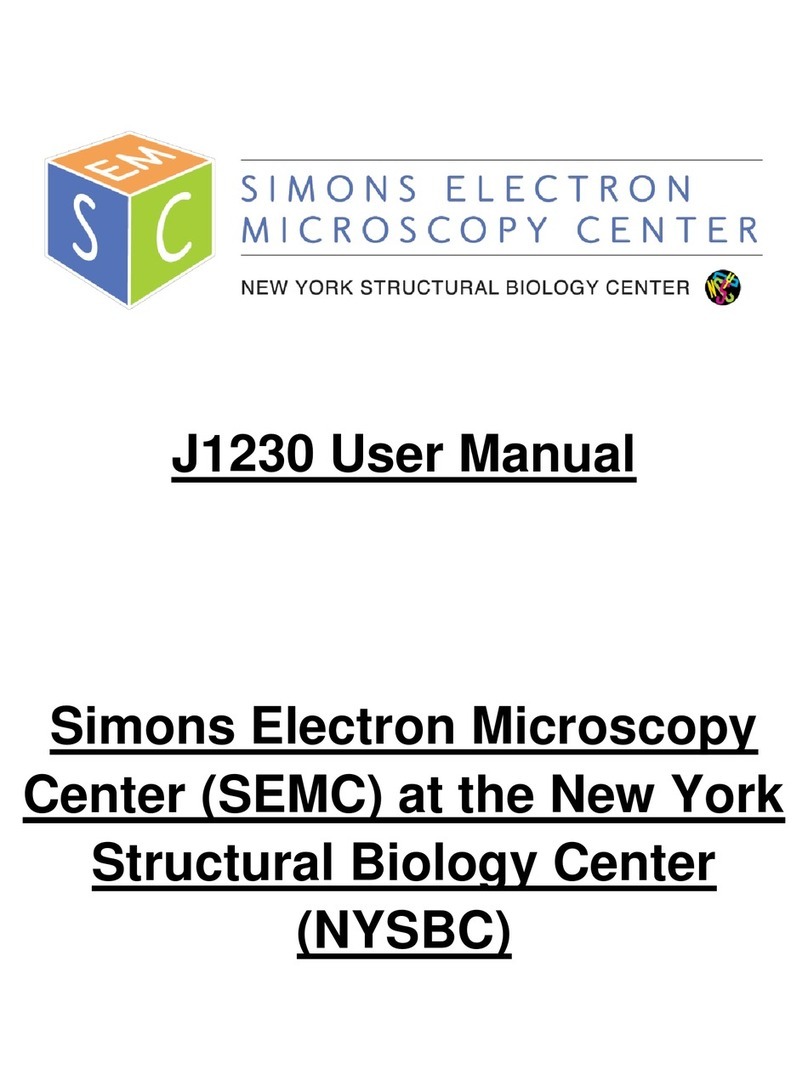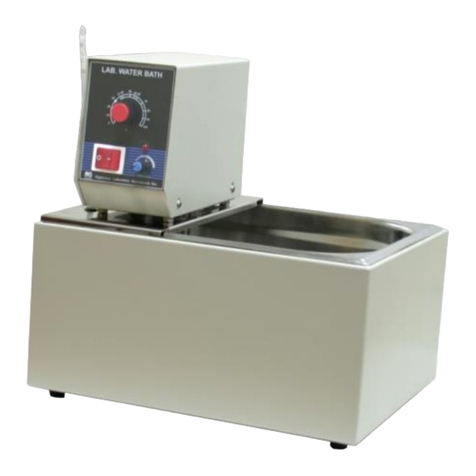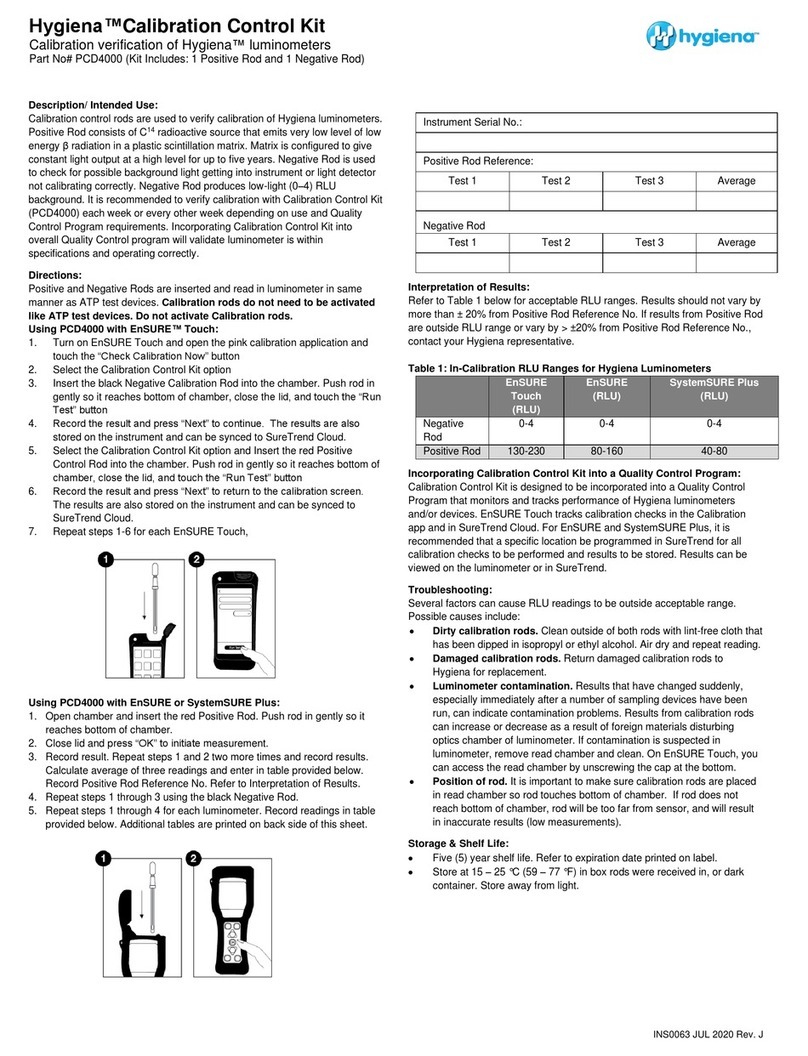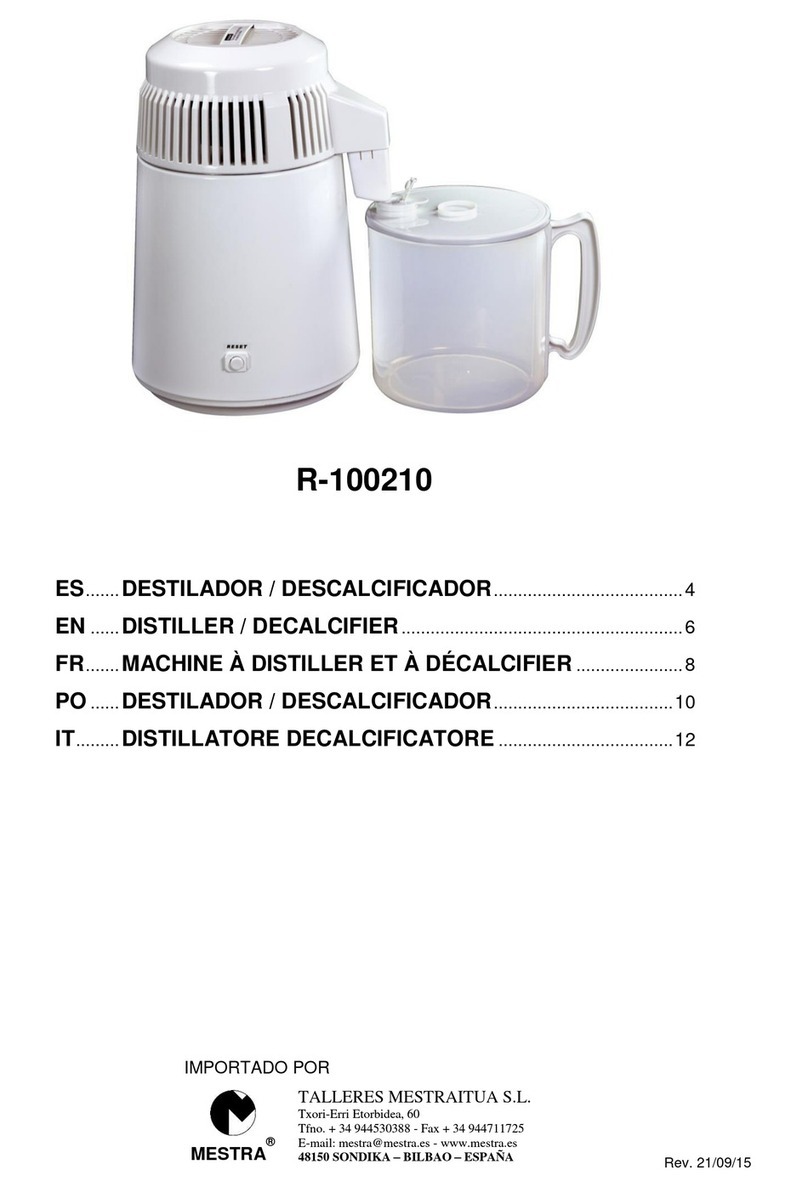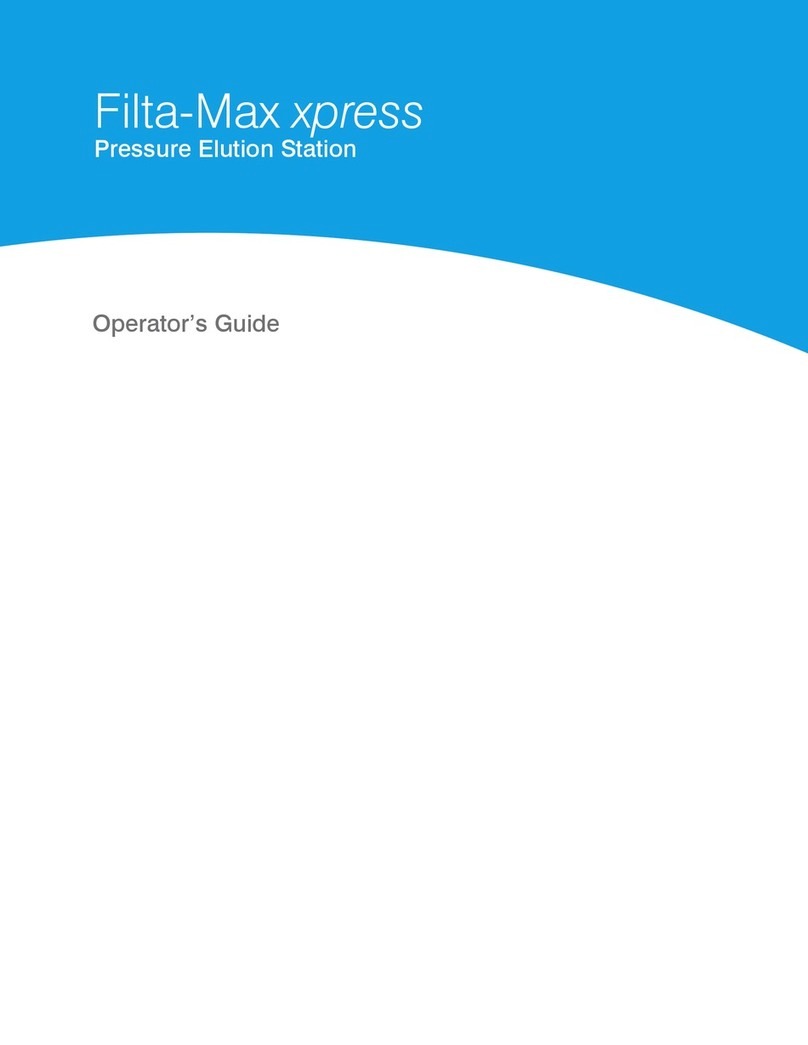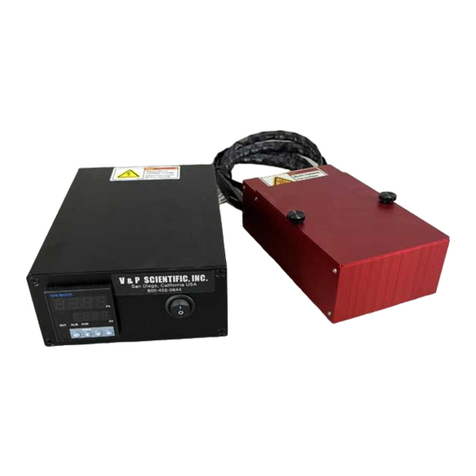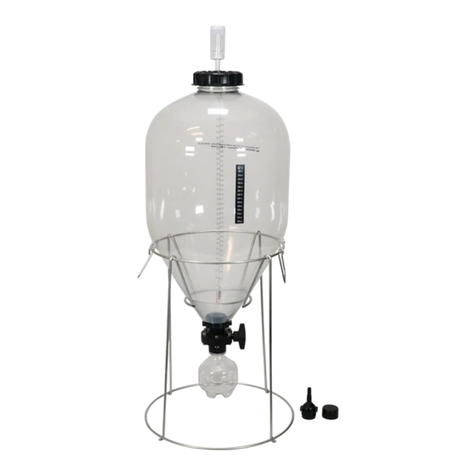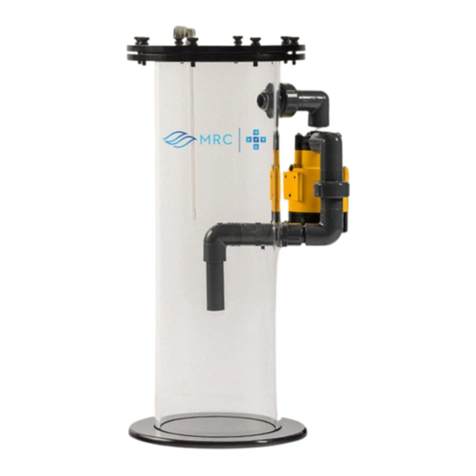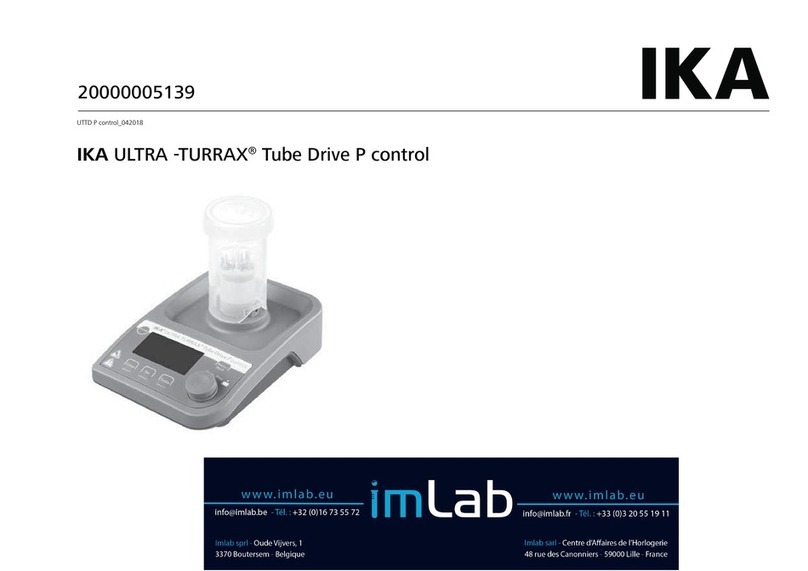SEMC TF20 User manual

TF20 User Manual
Simons Electron Microscopy Center
(SEMC) at the New York Structural
Biology Center (NYSBC)

Last updated 10/29/2020
1
Table of Contents
F20 Information Sheet 2
F20 User Guide (starting your session) 3
End of Day Checklist 4
Cryo Screening with Tietz TVIPS F416 5
Cryo Data Collection with the DE20 9
Dry Pumping Station User Guide 15
Gatan Elsa cryo holder manual 17
Gatan CT-3500 (Oxford) holder manual 19
Cryo Holder Insertion/Retraction Guide for F20 22
F20 Alignments 25
Troubleshooting 29

Last updated 10/29/2020
2
F20 Information Sheet
●Wavelengths
○80 kV = 0.04176 Å
○120 kV = 0.03349 Å
○200 kV = 0.02508 Å
○300 kV = 0.01969 Å
●Lens & magnification range
○LM = 21X → 2100X
○M = 1700X → 3500X
○SA = 65,000X → 280,000X
●Objective lens Cs = 2.1 mm
Aperture
#1
#2
#3
#4
Condenser
50 um
70 um
100 um
150 um
Objective
40 um
70 um
70 um
100 um
Selected area
40 um
70 um
100 um
200 um

Last updated 10/29/2020
3
F20 User Guide (starting your session)
1. Make sure microscope is in good condition:
a. HT and FEG are on
i. Setup → “High Tension” and “Operate” are
yellow
b. Column valves are closed
i. Setup → “Col. Valves Closed” is yellow
c. EM column vacuum is stable (IGP1 = 6)
d. Microscope left in SA mag range
e. Stage neutral
i. Search → click “Holder” to zero out the X, Y, Z
and α coordinates of the stage
f. Cold trap already filled with LN2(can last for 16 hours);
refill every 1 - 2 hours
2. Login to leginon workstation with your LDAP account
3. Transfer cryo holder from the pumping station to transfer
station; cool down holder and insert your sample
a. See Dry Pumping Station User Guide (for cryo holders)
for detailed instructions
4. Before insertion,
a. See Cryo Holder Insertion/Retraction Guide for F20 for
detailed instructions
b. CHECKLIST before insertion:
1) turbo is on and ready (yellow)
2) objective aperture is out
3) flu screen of microscope is down
4) shield of cryo holder is closed
5) airlock pump time = 120s
6) reset holder
7) alpha = -60°
5. Insert cryo holder into EM.
6. After insertion, wait for IGP1 to reach <10 before opening the column valves
7. Select the camera/acquisition type needed for your session today:
a. If you plan to screen multiple cryo grids today, use the F416 camera (Cryo Screening
with Tietz TVIPS F416)
i. This camera has faster throughput and yields higher contrast images in a single
exposure
ii. If your grid looks good, you can switch to the DE20 for data collection
b. If you plan to collect data for 2D/3D analysis, use the DE20 camera (“Cryo Data
Collection with the DE20” guide)
i. This camera has slower throughput, but can give you higher resolution details
within multiple frames of a movie

Last updated 10/29/2020
4
End of Day Checklist
1. After your screening and/or data collection is done, remove the cryo holder from the microscope
a. See Cryo Holder Insertion/Retraction Guide for F20 for detailed instructions
2. If you used the DE20, make sure the camera is “retracted” and “warm up”
3. Cryo cycle the microscope
a. column valves closed
b. reset holder
c. flu screen is down
d. objective aperture is out
e. high mag lenses on (send scope to EN/FA/FC preset; anything in the SA mag range)
f. click “Cryo Cycle” on microscope PC (240 minutes)
4. Remove cold trap from the stand when IGP1 = 99
a. You can keep the remaining LN2inside the cold trap (off the coils) for tomorrow’s user
5. Bake out the cryo holder
a. See Dry Pumping Station User Guide (for cryo holders) for detailed instructions
6. Log off Leginon workstation
7. Close Leginon client on both camera and microscope
8. Cleanup the bench space for the next user
9. Log any issues into the EM notebook or notify SEMC staff directly

Last updated 10/29/2020
5
Cryo Screening with Tietz TVIPS F416
The TVIPS is a CMOS (complementary metal-oxide-semiconductor) 16 megapixel camera with a 50
frame/sec readout (4k x 4k). It sits below the column of the microscope, below the DE20 camera (thus,
the DE20 must be retracted to be able to use the TVIPS). It is a robust camera that has good SNR (good
contrast) that is used primarily for screening grids. It sits within its own vacuum housing separate from
the EM vacuum and is not retractable and always cooled. Because the temperature rarely changes on the
camera, dark and gain references are taken infrequently (once per month). It is controlled using “EM-
Menu” software, which is found on the “camera” monitor in monitor input “DVI-2”. Suggested mags for
EN/FA/FC = 62,000x; HL = 5000x; SQ = 1700x.
MCL server (on microscope computer) must be on in order to turn on EMMENU4 (software for F416)
(on camera computer). If F416 computer restarted, login as supervisor.
1. After step 6 of “F20 User Guide”....
2. Open EMG or NCCAT Leginon_client (depending on your access type) on camera & microscope
computer
a. TVIPS camera control on monitor input DVI-2
3. Open Leginon program on leginon PC
a. In terminal, type betaleginon if using EMG Leginon_client, or nccatleginon if using
NCCAT Leginon_client.
4. Setup Leginon session settings:
a. Select “create new session” → “next”
b. Select holder (Elsa or TF20-cryo-holder_AMI-2)
c. In session description, type information about sample → “next”
i. Make sure the start session name with “F20- ”
d. Select project → “next”
e. Image directory (use default… “/gpfs/leginon/username”)
f. Connect to clients= tf20-f416 & tf20-d394 → “next”
g. C2 size = refer to the white board → “finish”
5. Once Leginon has started up, open the “application”
a. Application → Run → MSI-T2 (3.3)
i. Main = tf20leginon
ii. Camera = tf20-f416
iii. Scope = tf20-d394
b. “Run”
6. Upload your presets
a. Preset manager → “import presets from another session” (* icon)
i. TEM = tecnai; Digital Camera = Tietz F416 (if you do not see a camera
available, restart both clients on EM and camera computers)
b. “Find” presets from past 20 days; select desired preset (usually from the most recent user)
c. Highlight all the presets (GR, SQ, HL, FA, FC, EN) and “import” → “done”
i. Suggested mags for EN/FA/FC = 62,000x; HL = 5,000x; SQ = 1,700x

Last updated 10/29/2020
6
d. Close window
7. “Cycle” presets to minimize hysteresis in the beam
a. Under “preset manager” node, select “settings”
button and check the “cycle presets” option (see
image)
b. Send scope to EN preset 10X
8. Open shield of cryo holder. You may see a slight
increase in IGP1, but should settle within a few seconds
9. Open column valves when IGP <10
10. Center preset beams
a. Move to square of non-interest using the flu
screen and the stage track ball (square with
carbon that you don’t mind burning)
b. Center “grid” preset beam
i. Send scope to “grid” preset
ii. Lower flu screen
iii. Center beam using left trackball
iv. Open the “Edit” box and click “apply beam shift from scope”
c. Repeat step b. for square and hole preset
d. Center and adjust intensity of FA/FC/EN preset beam
i. Send scope to “EN” preset
ii. Lower flu screen
iii. For the EN preset, adjust beam diameter to ~1.5X the size of the second circle
and spot size until you achieve target dose of 40 - 70 e-/A2with 1 sec exposure.
iv. For the FA/FC preset you can make this beam a bit brighter and smaller
v. Open the “Edit” box and apply intensity “from scope” and beam shift “from
scope”
vi. Repeat for FA and FC preset
11. Get eucentric height and focus
a. On a square of non-interest...
b. “Z_focus” node→ simulate target (+ icon)
c. Recommended- record the eucentric height value; it is useful to have an idea of what the
eucentric height of your grid is, especially as you navigate around during data collection;
The eucentric height should stay relatively similar, +/- 50 um. This means your grid is
fairly flat.
d. “Z_focus” node → MF (manual focus)
e. Click on the upside-down ‘42’ “Toggle show resolution/defocus” and check the defocus
at the first zero to see if the set defocus is roughly correct.
12. Collect atlas of your grid (this is a series of low mag images that are stitched together to give you
a whole view of your grid; ~10 minutes)
a. Under the “Grid_targeting” node, click “settings” button (upper left hand side) and input
your grid description
i. Radius = 0.0009m = 0.9mm
b. Click “calculate atlas”

Last updated 10/29/2020
7
c. Click “play” to collect atlas
13. Insert and center objective aperture
a. Go to square of non-interest
b. Send scope to EN mag
c. Lower flu screen and send scope to “DIFFRACTION” mode (right knobset)
i. Should see bright green small beam on the flu screen with diffuse carbon
diffraction ring around it
ii. D = 460 - 680 mm
d. Insert objective aperture and center
e. Exit “DIFFRACTION” mode
14. Set up Ice Thickness
a. Go to vacuum area
b. Send scope to EN preset (make sure beam is centered)
c. Simulate target in exposure node (~3000)
d. Record the mean value and input into Ice_Thickness node (under ALS)
e. ALS coefficient with 100 um objective aperture = 392
f. ALS coefficient with 70 um objective aperture = 302
15. Acquire total dose of the EN preset (target = 30 - 60 e-/A2)
16. You are now ready to collect some images!
17. In “Square_Targeting” select 1 square of interest
a. Using “acquisition” mouse, select the center of square of interest
b. Click “Submit target”
c. Click “Submit queued targets”
18. In “Hole_Targeting” select 1 - 2 regions of holes of interest
a. Using “acquisition” mouse, select holes of interests (on the carbon, every 2x2 holes
away from each other)
b. Using “focus” mouse, select area of carbon towards the center of the hole areas you
selected in the step above (this is where leginon will acquire the eucentric height of the
square)
c. Click “Submit target”
d. Click “Submit queued targets” when you are done with every hole target
19. In “Exposure_Targeting” select exposure targets
a. Using “acquisition” mouse, select the center of the holes of interests, on the ice. Select
up to 4 holes that are closest to the optical axis (use “toggle center crosshair” tool to find
where center is). This ensures that you do not collect images with a lot of image shift.
b. Using “focus” mouse, select area of carbon towards the center of the stage (use “toggle
center crosshair” tool to find where center is). This is where leginon will acquire auto-
focusing for the exposure targets selected in the step above.
c. Click “Submit target”
d. Click “Submit queued targets”
20. Under “Hole” node, select “toggle queue timeout” so that column valves will close once exposure
queue is done collecting
21. To collect a new square, repeat steps 17 - 19 until you are done collecting data.
22. Once you are done for the day, read End of Day Checklist.

Last updated 10/29/2020
8

Last updated 10/29/2020
9
Cryo Data Collection with the DE20
The DE-20 camera system is a direct detection device (DDD) manufactured by Direct Electron. It has
high signal-to-noise ratio (SNR) with consistent performance across all spatial frequencies and TEM
magnifications. “Movie mode” proves high-speed acquisition of a continuous stream of frames (32 frames
per sec max, unbinned full-frame) with nearly 100% duty cycle (no dead time between frames). Increased
data quality compared to TVIPS thru drift correction, per-particle motion correction, radiation damage
compensation, post-acquisition exposure setting, etc. It has a 5k x 4k field of view (5120 x 3840) with a
6.4um pixel pitch. It is fully retractable and needs to be manually retracted and warmed when not in use,
and inserted and cooled when in use. The temperature changes make it so that the camera needs a new
dark and gain reference with each new session. The DE20 is sensitive to stray light (operate with window
covered and lights off). Suggested mags for EN/FA/FC = 50,000x, spot size 5, 3840 x 5120, bin1; HL =
5000x, spot size 5, 960 x 960, bin 4; SQ = 550x, spot size 5, 960 x 960 , bin 4; GR = 97x, spot size 5, 960
x 960 bin 4.
Dose should be 2.1 - 2.2 electrons/pixel/frame (no more than 2.5 otherwise clipping will occur). At
50,000X this corresponds to ~45 electrons/Å2for a 2 second exposure (1.54 Å/pixel).
1. After step 6 of F20 User Guide (starting your session)...
2. Open DE20 software to insert and cool down camera (NOTE- can only open MicroManager or
Leginon client/server at one time); DE-20 camera control on monitor input DVI-1
a. Close Leginon client on camera computer
b. Open “DE server GUI (OLD)” on camera computer (this program is laggy; wait 30 sec)
c. “Cool down” and “extend” camera (when not in use, DE20 should be retracted and
warmed); it takes ~ 5 min to cool down camera to -38 Celcius
i. See Temperature - Detector (Celcius) on the DE Server (Camera Settings)
ii. Wait for cool down before opening Leginon client (the DE server will stop refreshing and
updating temperature reading if Leginon client is open; temperature will not be affected)
d. “do not autosave” = true
3. Open Leginon client on camera computer (DE20 DVI1), microscope computer (TF20-D394), and
main computer (TF20LEGINON)
a. In terminal, type betaleginon
4. Setup Leginon session settings:
a. Select “create new session” → “next”
b. Select holder (TF20-cryo-holder_AMI-2)
c. In session description, start with F20 and then type info about sample → “next”
d. Select project → “next”
e. Image directory (use default… “/gpfs/leginon/username”)
f. Connect to clients= tf20-de20 & tf20-d394 → “next”
g. C2 size = refer to the white board → “finish”
5. Once Leginon has started up, open the “application”
a. Run → Application → MSI-T2 (3.3)
i. Main = TF20Leginon
ii. Camera = tf20-de20

Last updated 10/29/2020
10
iii. Scope = tf20-d394→ “run”
6. Upload your presets
a. Preset manager → “import presets from another session” (* icon)
i. TEM = tecnai; Digital Camera = DE-20
b. “Find” presets from past 20 days; select desired preset (usually from the most recent user)
c. Highlight all the presets (GR, SQ, HL, FA, FC, EN) and “import” → “done”
d. Close window
7. “Cycle” presets to minimize hysteresis in the beam
a. Under “Preset Manager” node, select “settings” button and check the “cycle presets”
AND “optimize cycling” option
8. Open shield of cryo holder when IGP1 <15; you may see a slight increase in pressure, but should
settle within a few seconds
9. Open column valves when IGP < 10.
10. Center preset beams
a. Send stage to square of non-interest (square with carbon that you don’t mind trashing)
i. Under “square_targeting”, select “acquisition” mouse and select square of non-
interest; submit target (click green “play” button)
b. Once the stage stops moving, check that beam is centered at all presets
i. Center grid preset beam
1. Send scope to grid preset and lower flu screen
2. Center beam using left trackball
3. Open the “Edit” box and click “apply beam shift from scope”
ii. Repeat step i. for square and hole preset
iii. Center and adjust intensity of FA/FC/EN preset beam
1. Send scope to “EN” preset and lower flu screen
2. Center beam using left trackball
3. Open the “Edit” box and apply beam shift “from scope”
4. Apply the same beam shift “from scope” for FA and FC preset
11. Get eucentric height and focus
a. Send scope to square preset and lower flu screen (R1 on knobset)
b. Using Right Knobset joint stick, move stage until you see a grid square with unique
fiducial; center that square on the flu screen
c. “Z_focus” node→ simulate target (+ icon)
d. Recommended- record the eucentric height value; it is useful to have an idea of what the
eucentric height of your grid is, especially as you navigate around during data collection; (the
eucentric height should stay relatively similar, +/- 50
this means your grid is fairly flat; if your eucentric height varies much more than that, your grid is
probably bent/wrinkled)
e. “Z_focus” node → MF (manual focus
12. Collect atlas of your grid (this is a series of low mag images that are stitched together to give you
a whole view of your grid; ~20 minutes)
a. Under the “Grid_targeting” node, click “settings” button (upper left hand side) and input
your grid description
i. Radius = 0.0009m = 0.9mm

Last updated 10/29/2020
11
b. Click “calculate atlas”
c. Click “play” to collect atlas
13. Gain references. For gains, it does not matter if objective aperture is in or out. Must be done over
vacuum.
a. EN preset gains
i. Prepare beam for target dose = 30 - 60 electrons/Å2(SS 5, beam diameter ~ 2X
bigger than second circle on flu screen)
ii. Dark reference
1. Close column valves and flu screen down
2. In “correction” node → “settings” → see LEFT image below → “dark”
and “both channels”

Last updated 10/29/2020
12
3. Acquire (you should see black image)
iii. Bright reference
1. Open column valves and flu screen up
2. In “correction” node → “bright” and “both channels”
3. Acquire (you should see image of the camera sensor)
iv. Confirm that correction is done
1. Under “correction” and “both channels”
2. Acquire (you should see a flat fielded image)
v. When done with en preset gains, make sure to apply that same brightness/beam
diameter to the en preset in Preset_Manager
b. FA/FC/HL/SQ/GR preset gains (SS 5, beam diameter ~ 2X bigger than second circle on
flu screen; target dose = 20 - 30 electrons/Å2).
i. Repeat step 13a using settings from RIGHT image below.
14. Set up Ice Thickness
a. Go to vacuum area
b. Send scope to EN preset (make sure beam is centered)
c. Simulate target in exposure node
d. Record the mean value and input into Ice_Thickness node (under ALS box, NOT ZLP)
e. ALS coefficient with 100 um objective aperture = 392
f. ALS coefficient with 70 um objective aperture = 302
15. Get the dosage (e-/A2) of the EN preset (target = 30 - 60 e-/A2)
16. Insert and center objective aperture
a. Over a junk square, send scope to EN mag
b. Lower flu screen and send scope to “DIFFRACTION” mode (right knobset)

Last updated 10/29/2020
13
i. Should see bright green small beam on the flu screen with diffuse carbon
diffraction ring around it
c. Insert objective aperture and center
d. Exit “DIFFRACTION” mode
e. If you plan to take a break, send microscope to high mag (FA/FC/EN) to turn on the high
mag lenses and close the column valves
17. You are now ready to collect some images!
18. In “Square_Targeting” select 1 square of interest
a. Using “acquisition” mouse, select the center of square of interest
b. Click “Submit target”
c. Click “Submit queued targets”
19. In “Hole_Targeting” select 1 - 2 regions of holes of interest
a. Using “acquisition” mouse, select holes of interests (on the carbon, every 2x2 holes
away from each other)
b. Using “focus” mouse, select area of carbon towards the center of the hole areas you
selected in the step above (this is where leginon will acquire the eucentric height of the
square)
c. Click “Submit target”
d. Click “Submit queued targets” when you are done with every hole target
20. In “Exposure_Targeting” node select exposure targets
a. Using “acquisition” mouse, select the center of the holes of interests, on the ice. Select
up to 4 holes that are closest to the center of the screen (use “toggle center crosshair” tool
to find where center is). This ensures that you do not collect images with a lot of image
shift.
b. Using “focus” mouse, select area of carbon towards the center of the stage (use “toggle
center crosshair” tool to find where center is). This is where leginon will acquire auto-
focusing for the exposure targets selected in the step above.
c. Click “Submit target”
d. Click “Submit queued targets”
i. Note- at this point you have queued up a number of exposure targets for leginon
to acquire.
21. Under “Hole” node, select “toggle queue timeout” so that column valves will close once exposure
queue is done collecting
22. To collect a new square, repeat steps 20 - 22 until you are done collecting data.
23. Start frame alignment
a. In emgweb, select the processing link (upper left side)
b. Login with LDAP info (upper right side)
c. In “Direct Detector Tools” → “Select Frame Alignment” → “Full Frame alignment for
Direct Electron Co. Camera”
d. Input the following parameters.

Last updated 10/29/2020
14
e. Select “Just Show Command”
f. Copy the command line
g. In new screen, type “ssh de20framealignment” or “ssh zeus”
h. Paste the command from step 25e
24. Start CTF correction (after first movie is done aligning)
a. CTF → estimate the CTF → CTFFIND v4
b. Default all settings except preset = en-a
c. Run on semc-head (or copy/paste into emgbox05)
25. If you are done for the day…refer to End of Day Checklist

Last updated 10/29/2020
15
Dry Pumping Station User Guide
Do not overtighten
the valves! Finger-
tight only!
Normal state at the
beginning of the day:
V1 = closed
V2, V3, & V4 = open
Removing holder
from dry pumping station:
1. Vacuum should be reading 10-3 to 10-5 Pa.
2. Remove temperature control cord by pulling straight out from base of plug from the cryo holder
jacket. Do not twist or pull the wire!
3. Close V4, then close V3. If there is a second holder attached, close V4 and then V3 on that holder.
4. Close V2. V1 should be closed already, but if not then close V1 last.
5. Unhook tygon tubing from cryo holder and re-connect to silver stopping plug (behind V1 & V2).
6. Turn pumping station off. Wait for green “MDP status” and “System Status” lights to turn off.
7. Using one hand to stabilize the V1/V2 module, gently apply force to pull out cryo holder.
a. Transfer cryo holder from pumping station into cryo transfer station.
8. Place black blanking plug into opening where cryo holder was.
Inserting holder into dry pumping station and warming it up:
1. Make sure all valves on pumping station are closed. If there are 2 holders, make sure the second
holder has V4 and V3 closed (in that order).
2. Remove blanking plug from pumping station
3. Insert cold cryo holder. Invert holder to facilitate condensation removal.
4. Connect the plastic tygon tubing to V4 on the cryo holder.
5. Turn on pumping station. Wait for green “MDP status” and “System Status” light to turn on (~1
min).
6. Open V2, then V1 and wait until vacuum stabilizes.
7. Connect cryo holder to the temperature controller and run the “WARMUP CYCLE” (~20 min)
a. Warm up on the Elsa holder takes ~ 2 hr. Because of the long time to warm up, only keep
V1 and V2 open (V3 and V4 of BOTH holders CLOSED) during the warmup cycle.

Last updated 10/29/2020
16
Make sure that the 626 holder has a good vacuum. Finally, send message in slack in
#EMG channel: “Elsa is warming up now. V1 and V2 open, V3 and V4 of both Elsa and
626 are closed. 626 has a good vacuum and should be ready to go first thing in the
morning.”
b. You are done after this step.
c. If warming up the 626 holder, proceed to step 8.
8. Once warm up is done, close V1.
9. Open V3, then open V4 of holder #1.
10. Open V3, then open V4 of holder #2.
11. On Fridays, start the “ZEOLITE CYCLE” for 2 hours.
***If for any reason you cannot finish warming up the 626 and/or Elsa holder and open V3 and V4
to pump down the jacket of the holder by the end of your session, please send an email to
emg@nysbc.org OR slack in #EMG channel:
“626 and/or Elsa is still warming up right now. Only V1 and V2 are open, pumping down the tip
only. Can someone from EMG please close V1 and then open V3 and V4 first thing in the morning
to pump down the jacket of the holders?”

Last updated 10/29/2020
17
Gatan Elsa cryo holder manual
The Elsa holder is a specialized holder with a large cryogenic dewar that can maintain temperature
for ~8 hours.
Elsa holder handling should be done by EMG staff only; this includes loading the sample,
insertions, and retractions. Users should only be operating Leginon.
●1X per week, the holder (V4) should be pumped down
●1X per month, the holder should be baked out
●Every day the holder is used for cryo, a warm up should be applied at the end of the day
1. Remove Elsa holder from the dry
pumping station
a. V4 and V3 of Elsa will most
likely be closed; if not, close
these valves first (close V4 and
then V3)
b. If there is a second holder
attached to the dry pumping
station, close V4 and then V3
of the second holder
c. Close V1 and then V2
d. Turn dry pumping station off
e. Once the “MDP status” and
“System Status” turn off, retract
holder from dry pumping station
f. Transfer Elsa holder to the Elsa cryo transfer station
2. Cool down the Elsa holder in “Cryo Transfer” mode (should be done on the pumping station
desk)
a. Attach the Elsa holder to the Elsa temperature controller using the 698 cord (thick grey
cord). Make sure to connect red dots to one another.
b. Switch to “Cryo Transfer” mode and start
c. Slowly add liquid nitrogen to the tip and dewar sides of the holder until you are at -
170℃. This takes ~30 minutes.
3. Transfer sample to the Elsa holder
a. Open the shield of the holder.
b. Once the holder is at -170℃ you can unplug it from the temperature controller and move
the Elsa with its cryo transfer station over to the general bench.
c. Remove the clip ring from the holder tip. Place the silver end of the tool onto the clip ring
and while applying a small amount of vertical pressure on the end of the clip ring tool,
slowly turn the tool clockwise 1 - 2 turns until you feel resistance. *Be careful not to turn
too far as it will over-tighten the clip ring to the clip ring tool*. Pull up to remove the clip
ring.

Last updated 10/29/2020
18
d. Transfer cryo grid to the tip of the holder.
e. Secure the grid with the clip ring. Place clip ring
side of the tool onto the grid until you feel a click.
While applying a small amount of vertical pressure
on the end of the clip ring tool, slowly turn the tool
COUNTER- clockwise 1 - 2 turns until the tool
moves freely. Pull up to remove the clip ring tool.
f. Close the shield of the cryo holder.
4. Insert Elsa holder into the microscope
a. Insertion is the same as the 626 holder.
5. Collect data
6. Retract Elsa holder from the microscope
a. Retraction is the same as the 626 holder.
7. Warm up the holder
a. Dump out all excess liquid nitrogen from the dewar of the holder.
b. Insert holder into the dry pumping station and turn it on.
c. Once “MDP status” and “System Status” turn green, open V2 and then V1.
d. Attach the holder to the Elsa temperature controller.
e. Run the “Warm up” cycle. This takes ~2 hours.
8. On Fridays, pump down the dewar (open V3 and V4).
If an overnight collection was done and you want to use the holder the next day, on the next day:
●If you have time… retract the holder and run warm up cycle (takes 2 hours); after warm up you
can then cool down the holder and use as normal
●If you don’t have time… cool down the holder in the scope (with the high-resolution cord
attached so you can measure the temperature of the tip); after the tip reaches ~ -170C, you can
retract the holder into a cold transfer station and switch to the grid of your choice (you will
discard the current grid since it has warmed up in the column and is unusable now)

Last updated 10/29/2020
19
Gatan CT-3500 (Oxford) holder manual
●This holder takes ~30 min to cool down and should be done while plugged into the temperature
controller to monitor cooling.
●It is nearly impossible to recover grids from the CT-3500 holder. Thus, if the grid is good you
should plan to collect rather than save the grid.
1. Remove holder from dry pumping station.
a. At the beginning of the day, the temperature control readout should be at 50°C (bake out
from the night before). Turn the controller off and then back on so as to stop the heating.
Once turned back on youshould see the temperature dropfrom 50°C. Wait until temp drops
to at least 30°C before cooling down the holder.
b. Close V4, V3 and then V1 of the dry pumping station. V2 should already be closed, but if
not, then close V2.
c. Unhook tygon tubing from holder and re-connect to silver stopping plug (near V1 & V2)
d. Turn the pumping station off and wait for the green “MDP ready” light to turn off
e. Using one hand to stabilize V1/V2 vacuum area, gently apply force to pull out cryo-holder.
Open the holder entry valve on the workstation and insert the holder
f. Immediately upon removing cryo holder, store in cryo transfer station
g. Place blanking plug (black) into opening where cryo holder was
h. Disconnect the silver/black/red vacuum adapter off of the holder. See image.
2. Cool down holder to at least -160°C.
a. Cool down the holder with it connected to the temperature controller module to adequately
measure temperature. Cool down the dewar/jacket of the holder using a funnel. SLOWLY,
cool down the tip of the holder using the cylindrical filling cup until the temperature reads
at least -160°C (takes ~ 30 min). Make sure that while the tip is cooling down, that there
is a steady droplet of liquid nitrogen pouring onto the tip of the holder. See image →
Table of contents
Other SEMC Laboratory Equipment manuals
Popular Laboratory Equipment manuals by other brands

Tektronix
Tektronix Keithley 2380-500-30 Performance Verification Manual

Thermo Scientific
Thermo Scientific 88881-003 user manual
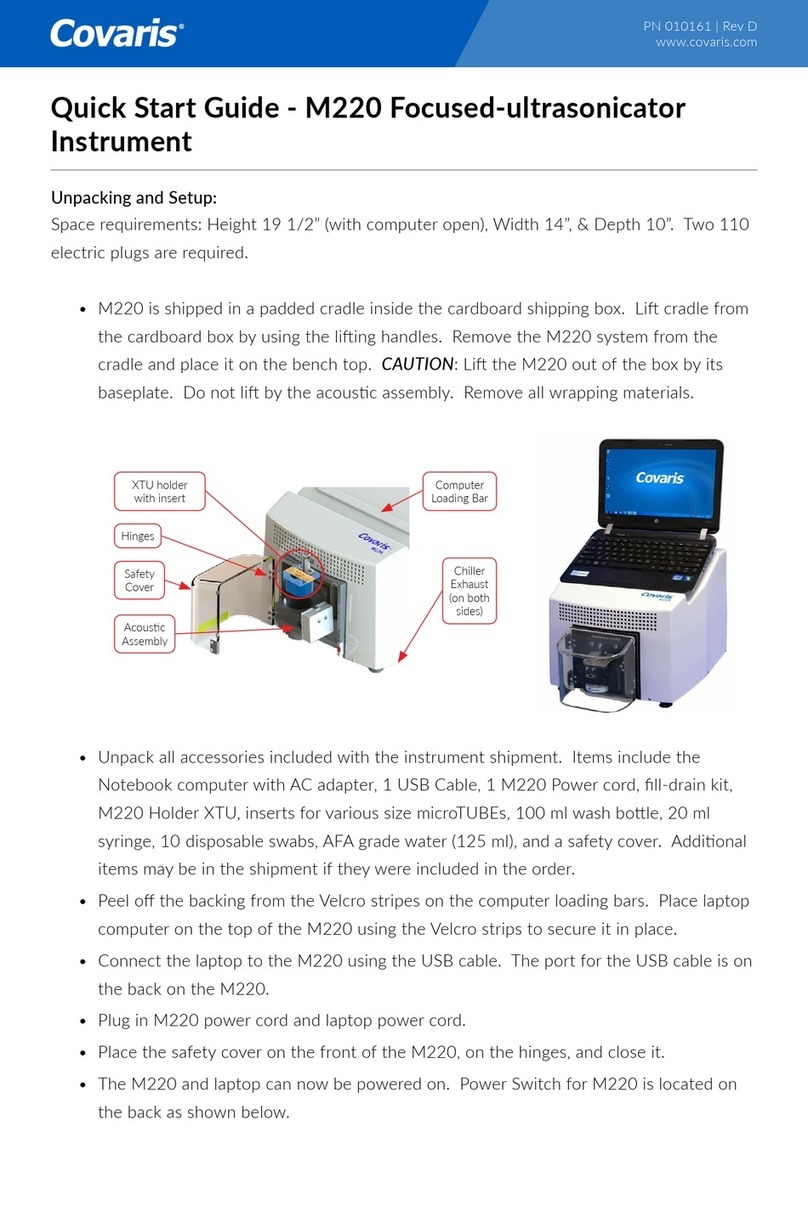
Covaris
Covaris M220 quick start guide

FujiFilm
FujiFilm DRI-CHEM NX10N instruction manual
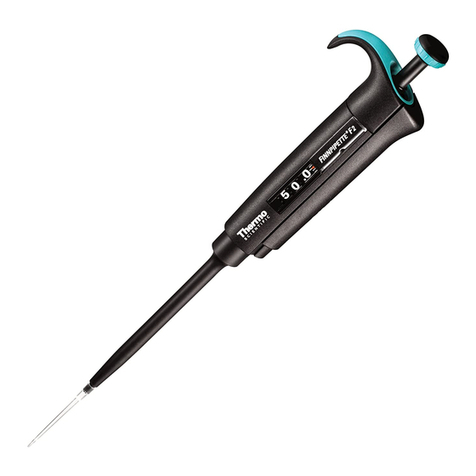
Thermo Scientific
Thermo Scientific Finnpipette F2 Instructions for use
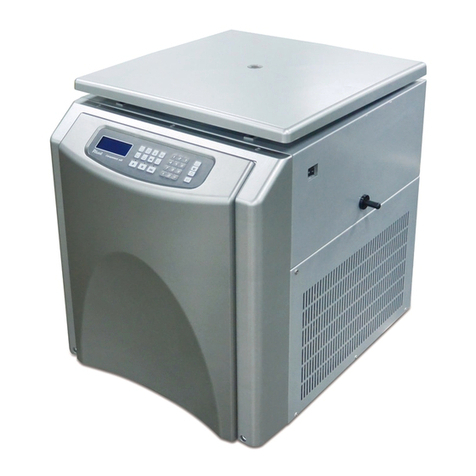
Hanil
Hanil Component wR quick guide
